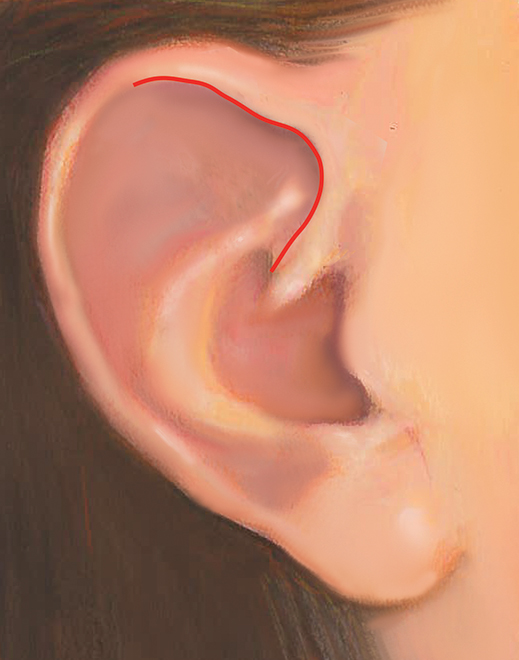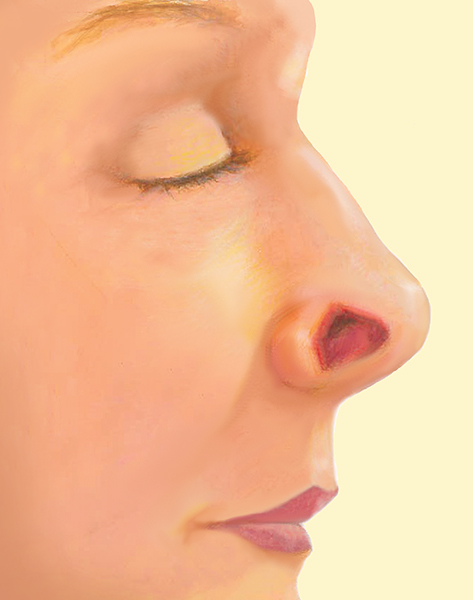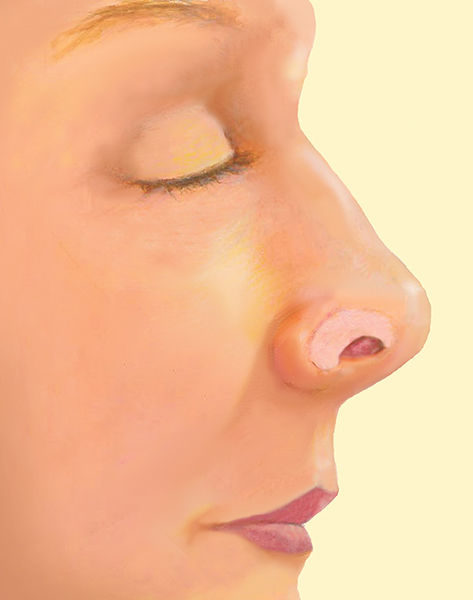Skin Cancer
What is Skin Cancer
A cancer diagnosis is very difficult to accept. Understanding that treating your skin cancer may result in scars or disfigurement can also be troubling. Your plastic surgeon understands your concerns and will guide you through treatment and explain the resulting effect on your health and appearance.
Skin cancer, much like any form of cancer, may require surgery to remove cancerous growths. Your plastic surgeon can surgically remove cancerous and other skin lesions using specialized techniques to preserve your health and your appearance. Although no surgery is without scars, your plastic surgeon will make every effort to treat your skin cancer without dramatically changing your appearance.
Consultation and Preparing
The first step in treating skin cancer is a consultation with a plastic surgeon. The success and safety of your skin cancer surgery depends very much on your complete candidness during your consultation. You'll be asked a number of questions about your health, desires, and lifestyle.
During your consultation be prepared to discuss:
- Your type of skin cancer
- Medical conditions, drug allergies, and medical treatments
- Current medications, vitamins, herbal supplements, alcohol, tobacco, and drug use
- Previous surgeries
- The likely outcomes of your treatment and any risks or potential complications
Your surgeon will also:
- Evaluate your general health status and any pre-existing health conditions or risk factors
- Examine your skin
- Take photographs
- Discuss your options
- Recommend a course of treatment
- Discuss likely outcomes of surgery and any risks or potential complications
Prior to surgery, you may be asked to:
- Get lab testing or a medical evaluation
- Take certain medications or adjust your current medications
- Stop smoking
- Avoid taking aspirin, anti-inflammatory drugs, and herbal supplements as they can increase bleeding
Your plastic surgeon also will discuss where your procedure will be performed. Skin cancer surgery may be performed in a minor treatment room, an accredited office-based surgical facility, licensed ambulatory surgical center, or a hospital. If your procedure is performed with any sedation, be sure to arrange for someone to drive you to and from surgery and to stay with you for at least the first night following surgery.
Be sure to ask your plastic surgeon questions. It's very important to understand all aspects of your skin cancer procedure. It's natural to feel some anxiety. Don't be shy about discussing these feelings with your plastic surgeon.
The Procedure
Depending on the size, type and location of the lesion, there are many ways to remove skin cancer and reconstruct your appearance if necessary.
Step 1—Anesthesia
Medications are administered for your comfort during the surgical procedures. The choices include local, intravenous sedation and general anesthesia. Your doctor will recommend the best choice for you.
Step 2—Removal
A small or contained lesion may be removed with excision - a simple surgical process to remove the lesion from the skin. Closure is most often performed in conjunction with excision.


Skin cancer can be like an iceberg. What is visible on the skin surface sometimes is only a small portion of the growth. Beneath the skin, the cancerous cells cover a much larger region and there are no defined borders. In these cases, a specialized technique called Mohs surgery may be recommended.
During this procedure, your plastic surgeon may order a frozen section. During this step, the cancerous lesion is removed and microscopically examined by a pathologist prior to wound closure to ensure all cancerous cells have been removed. The goal is to look for a clear margin - an area where the skin cancer has not spread. If clear margins are found, the resulting wound would be reconstructed. If clear margins are not present, your plastic surgeon will remove more tissues until the entire region has a clear margin.
Step 3—Reconstruction
A skin cancer lesion that is particularly large, is being removed with frozen sections or is likely to cause disfigurement may be reconstructed with a local flap. Healthy, adjacent tissue is repositioned over the wound. The suture line is positioned to follow the natural creases and curves of the face if possible, to minimize the obviousness of the resulting scar.
Local Flap


Your surgeon may choose to treat your wound with a skin graft instead of a local flap. A skin graft is a thin bit of skin removed from one area of the body and relocated to the wound site.
Skin Graft




Step 4—See the results
After your skin cancer has been removed and any primary reconstruction is completed, a dressing or bandages will be applied to your incisions.
Risks and Safety
When faced with skin cancer surgery you will have to decide if the risks and potential complications are acceptable. You will be asked to sign consent forms to ensure that you fully understand the procedure.
The risks include:
- Allergies to tape, suture materials and glues, blood products, topical preparations, or injected agents
- Anesthesia risks
- Change in skin sensation
- Damage to deeper structures—such as nerves, blood vessels, muscles - can occur and may be temporary or permanent
- Excessive bleeding
- Infection
- Poor healing of incisions
- Possibility of revision surgery
- Recurrence of skin cancer
- Systemic spread of skin cancer
These risks and others will be fully discussed prior to your consent. It's important that you address all your questions directly with your plastic surgeon.
Other Important Considerations:
Skin grafts have an added risk that the graft not "take" and therefore additional surgery may be necessary to close the wound.
Preserve Your Health:
Once you have been diagnosed with skin cancer, you are at a higher risk to develop another skin cancer. Since skin cancer may reoccur, it's important to discuss the signs of skin cancer with your physician, regularly perform self-examinations for suspicious lesions, and schedule an annual skin cancer screening.
Recovery after Surgery
Following your skin cancer surgery, incision sites may be sore, red, or drain small amounts of fluid.
- It is important to follow all wound care instructions such as cleansing and applying topical medications exactly as directed
- You will be able to return to light activity as instructed by your surgeon.
- Make certain to keep your incision sites clean and well protected from potential injury
- Try to limit movement that may stress your wound and your sutures
Be sure to ask your plastic surgeon specific questions about what you can expect during your individual recovery period.
- What medication will I be given or prescribed after surgery?
- Will I have dressings/bandages after surgery?
- When will they be removed?
- Are stitches removed? When?
- When can I resume normal activity and exercise?
- When do I return for follow-up care?
- How long will it take before healing is complete?
Healing will continue for many weeks or months as incision lines continue to improve. It may take a year or more following a given procedure for incision lines to refine and fade to some degree. In some cases, secondary procedures may be required to complete or refine your reconstruction.
Sun exposure to healing wounds may result in irregular pigmentation and scars that can become raised, red, or dark. Sun exposure may increase the risk of the development of skin cancer in another region of your body.
Results
Your plastic surgeon can treat your skin cancer by surgically removing cancerous skin and closing the resulting wound. Some forms of skin cancer require additional treatment such as radiation therapy. Your physician will advise you about any follow-up treatment recommendations.
Reconstruction closes the skin cancer defect, but no reconstruction is perfect. Visible scars will always remain at incision sites. You may also see textural, color or other visible differences of the skin in reconstructed areas. In some cases, treating your skin cancer can be disfiguring to your appearance. Although every effort is made to restore your appearance as closely and naturally as possible, the most important factor is that your skin cancer is effectively cured.
Following your physician's instructions is essential to the success of your surgery. It's important that the surgical incisions are not subjected to excessive force, swelling, abrasion, or motion during the time of healing. Your doctor will give you specific instructions on how to care for yourself.
Cost
Prices for skin cancer surgery vary. A surgeon's cost may be based on his or her experience, the type of procedure used, and the geographic location of the office.
Cost may include:
- Anesthesia fees
- Hospital or surgical facility costs
- Medical tests
- Prescriptions for medication
- Surgeon's fee
Your health insurance plan should cover skin cancer surgery, related complications, or another surgery to reconstruct your appearance. Pre-certification is generally required for reimbursement or coverage. Be sure to consult with your insurance company in advance of any surgery.
Your satisfaction involves more than a fee:
When choosing a plastic surgeon for skin cancer surgery, remember that the surgeon's experience and your comfort with him or her are just as important as the final cost of the surgery.
Plastic surgery involves many choices. The first and most important is selecting an ASPS member surgeon you can trust. ASPS member surgeons meet rigorous standards:
- Board certification by the American Board of Plastic Surgery® (ABPS) or in Canada by The Royal College of Physicians and Surgeons of Canada®
- Complete at least six years of surgical training following medical school with a minimum of three years of plastic surgery residency training
- Pass comprehensive oral and written exams
- Graduate from an accredited medical school
- Complete continuing medical education, including patient safety each year
- Perform surgery in accredited, state-licensed, or Medicare-certified surgical facilities
Do not be confused by other official sounding boards and certifications.
The ABPS is recognized by the American Board of Medical Specialties (ABMS), which has approved medical specialty boards since 1934. There is no ABMS recognized certifying board with "cosmetic surgery" in its name. By choosing a member of The American Society of Plastic Surgeons, you can be assured that you are choosing a qualified, highly-trained plastic surgeon who is board-certified by the ABPS or The Royal College of Physicians and Surgeons of Canada.
This procedural information is intended strictly for educational purposes. Only models are depicted in these procedural information pages. It is not intended to make any representations or warranties about the outcome of any procedure. It is not a substitute for a thorough, in-person consultation with a board certified plastic surgeon.
